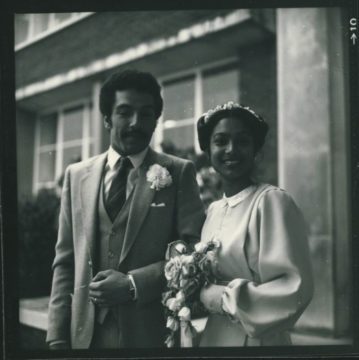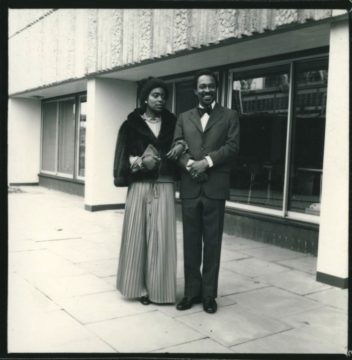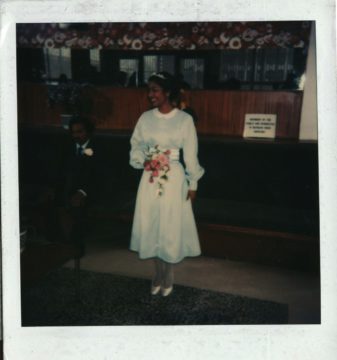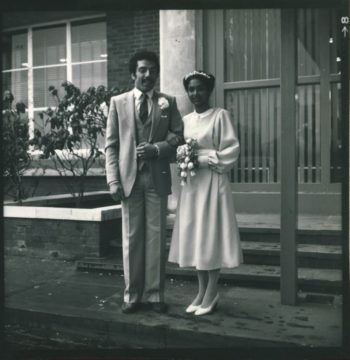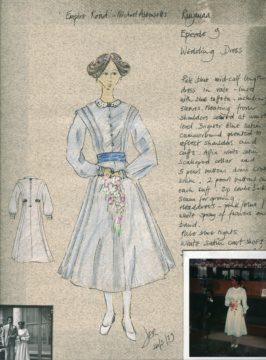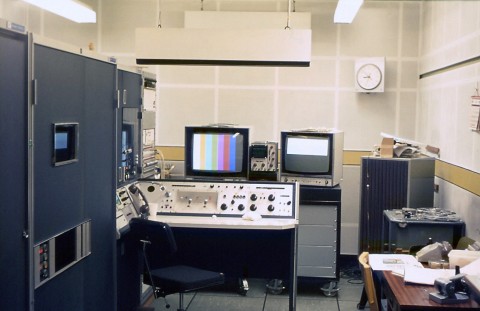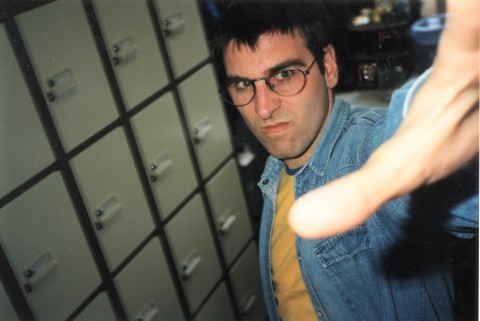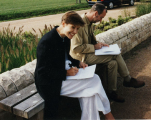
Ali Ward pictured with Adam Pascoe, from ‘Gardener of the Year’
‘Gardening Neighbours’ was the first of a series of shows where a street got together to redesign their gardens and a common piece of land. Presented by the wonderful Ali Ward and Diarmuid Gavin the idea was that they would work on their gardens from designs by the experts. Even today I have used some of their tips in my own garden, so they were really useful. It was set in a leafy part of Sheffield, the exact part I cannot remember but it was lovely and on one of the city’s many hills. It was an small cul-de-sac of late Victorian/ Edwardian villas populated by a range of people from large mature families to retired couples and young marrieds. There were lots of very small babies and toddlers about through the months we were there, which was useful for me as I was heavily pregnant at the time ( I am sure the digging helped for a smooth birth ). As for the placenta incident…. The couple had decided to ‘plant’ the placenta under a special tree, despite warnings by Ali and Diarmuid that the intense nutrients would fry the poor plant. I was on sound and as the couple asked for some privacy we filmed from afar. Which was a good job as I was still suffering for severe ‘morning sickness’.. yes even at seven and eight months… My one overriding memory is the quelch and flopping sound it made as it was poured into the hole from the plastic bowl it had defrosted in…
Becky Land
The following comments were posted on the Pebble Mill Facebook Group:
Nicola Silk: ‘I was the director, Rachel Innes-Lumsden (Rachel Adamson now) produced, Nigel Walk and Ann Banks were APs, Becky (what was your surname back then – I’m sure it wasn’t Land!) researched, Chris Hardman was the PA, Ian Churchill (cam) and Ross Neasham (sound) were the crew across the whole series, Roger Casstles was the exec and James Hey cut it. I might have left out a few people…but it was 14 years ago! It was my first series director gig and I’ve got very happy memories of weekends spent in Kenbourne Grove, Netheredge over the summer of ’98. The sound of the placenta sloshing out of its tupperware into the ground will stay with me too!’
Becky Land: ‘Wow Nicola my memory is not that good, Kenbourne Grove, Netheredge….. I do remember trying to find metal planters that were “three foot by three foot by three foot”. I was Lloyd back then, even though I was married and was close to having first baby. Hubby finally flipped when we watched an episode go out in the maternity ward the day before I gave birth. My name came up as in the credit as Becky Lloyd and he demanded I changed it!! He’s never insisted on much, poor dab. Do you have photos?’
